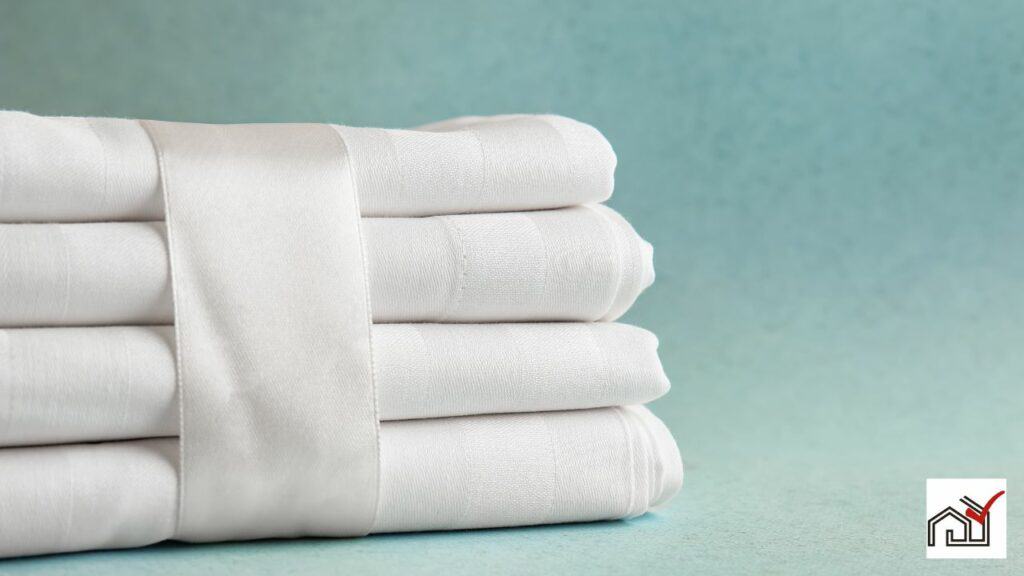Selecting the right bed pillow size is important for sleep comfort and support. Pillows align the head and neck with the spine to improve rest.
A standard pillow is 20 x 26 inches, suitable for twin or full-size beds. For larger beds, queen pillows measure 20 x 30 inches and king pillows are 20 x 36 inches, matching the width of queen and king mattresses.
Body and specialty pillows have different sizes for various needs.
Pillow height, or loft, is also crucial for comfort and should be considered with size.
Choose a pillowcase that fits well to ensure the pillow retains its shape and support.
Understanding Pillow Sizes
Selecting the right pillow size is important for comfort and support during sleep. The standard pillow size is 20 x 26 inches, suitable for twin or full-size beds. Queen pillows are 20 x 30 inches, fitting queen-sized beds well, and king pillows are 20 x 36 inches, ideal for king-sized beds and those needing more space.
Different pillow sizes, including the square Euro sham pillow measuring 26 x 26 inches, cater to various needs and preferences. A pillow sizes chart can help identify the best option for a specific bed size and sleeping style.
Choosing an appropriate pillow size is not only about aesthetics but also about functionality and ergonomic support. Pillows should match the bed size and provide proper support for the head and neck to prevent discomfort. Considering pillow size in relation to bed dimensions and individual needs helps ensure a comfortable and supportive sleep environment.
Standard Pillow Dimensions
Standard pillow dimensions are 20 inches by 26 inches, suitable for twin and full-size beds. These pillows fit within standard pillowcases, which measure 20 to 21 inches wide and 30 to 32 inches long.
A standard pillow works for smaller beds and as a base layer on larger beds. For queen-size beds, people can use standard or super standard pillows, the latter being slightly longer. Queen pillows, which are 20 inches by 30 inches, provide a fuller look and suit those who prefer bigger pillows.
King pillows, which are wider, are intended for king or California king beds. The key is to select a pillow size that complements the bed size and contributes to a comfortable sleep.
Queen and King Options
Queen and king pillows are sized to fit queen and California king mattresses. A queen pillow fits a queen bed and can make a twin bed look fuller. King pillows suit king and California King beds, providing a proportional look and extra back support for sitting up.
For a king-size bed, two king pillows are recommended to cover the bed's width and offer a balanced look. These larger pillows are also practical for reading or watching TV in bed.
Pillows like the Original Casper Pillow, Memory Foam Pillow, and Down Pillow come in standard and king sizes to fit various beds and preferences. On a queen bed, a single queen pillow gives a neater appearance than two standard pillows.
For king or California king beds, one should choose king-size pillows and pillowcases for proper fit and aesthetics. These pillows enhance comfort and contribute to the bedroom's decor.
Body and Specialty Pillows
Body and specialty pillows differ from standard pillows and are designed to meet specific needs.
Body pillows are long, providing support for side sleepers to help align the spine and reduce pressure on the back and hips. They are often used by pregnant women for added comfort.
Specialty pillows include wedge pillows, which have a triangular shape and elevate the body. This can aid with conditions like acid reflux, sinus congestion, and sleep apnea. Memory foam is commonly used in these pillows for its adaptability to body shape, offering better support.
Neck pain pillows are ergonomically designed to reduce strain and align the neck and spine. Knee pillows help keep the spine's natural curve, minimizing knee and hip discomfort.
Travel pillows, shaped like a horseshoe, support the neck and maintain spinal alignment when sitting up, such as during travel. CPAP pillows have special cutouts for CPAP machine users to accommodate masks and tubes, fitting a variety of sleeping positions and mask types.
There are many body and specialty pillows available to enhance sleep quality.
Pillow Loft Importance
Choosing the right pillow loft is crucial for maintaining proper spinal alignment and preventing discomfort during sleep. A correct pillow thickness supports the natural curve of the spine, especially benefiting the head and neck by reducing pressure and promoting alignment, which can prevent waking up with aches.
The pillow loft is a key element for sleep products to provide comfort and support. Side sleepers often need a higher loft to keep their head and neck aligned with their spine. Back sleepers might prefer a medium loft to support their cervical spine's curve. Stomach sleepers should use a low loft pillow to avoid raising their head too much, which can cause neck strain.
Understanding the importance of pillow loft is important for improving sleep quality. It involves more than the pillow's softness or material; it's about supporting the body overnight. An incorrect loft may cause back discomfort and restless sleep.
Therefore, one should consider their usual sleeping position when choosing a pillow loft to ensure a good night's sleep and a healthy spine.
Pillowcase Sizing Tips
To ensure a pillowcase fits properly, measure the pillow first. A standard pillow is 20×26 inches, so choose a pillowcase of the same size for a tight fit, which prevents the pillow from slipping out. Consider a slightly larger pillowcase to allow for shrinkage after washing and to accommodate the pillow's loft.
For a king pillow, 20×36 inches, select a pillowcase of the same or a bit larger size for a neat look and ease of care.
Euro pillows are square and typically measure 26×26 inches. Use a pillowcase that matches this size to keep the square shape for decorative purposes.
Queen pillows measure 20×30 inches. A pillowcase with identical or slightly larger dimensions will cover the pillow without extra fabric.
For a fuller pillow appearance, use a pillowcase that matches the pillow size or is marginally smaller. For a flatter look, choose a larger pillowcase and tuck in the ends.
These tips will help achieve the right fit and look for your pillows.
Comfort and Support Considerations
The size of a bed pillow significantly impacts comfort and support. Pillow size should match individual requirements and sleep positions. Side sleepers need a pillow with enough height to fill the space between their head and the mattress, keeping the spine straight. Stomach sleepers need a flatter pillow to prevent neck strain.
Pillow size is important; too small may lack support, too large can misalign the body. Orthopedic pillows provide targeted support for the neck and spine or can elevate body parts for health reasons.
Choosing the right pillow depends on sleep habits and personal preference. Custom or orthopedic pillows may be necessary for those with specific needs. Finding the right pillow size is unique to each person and contributes to better sleep and spinal health.




